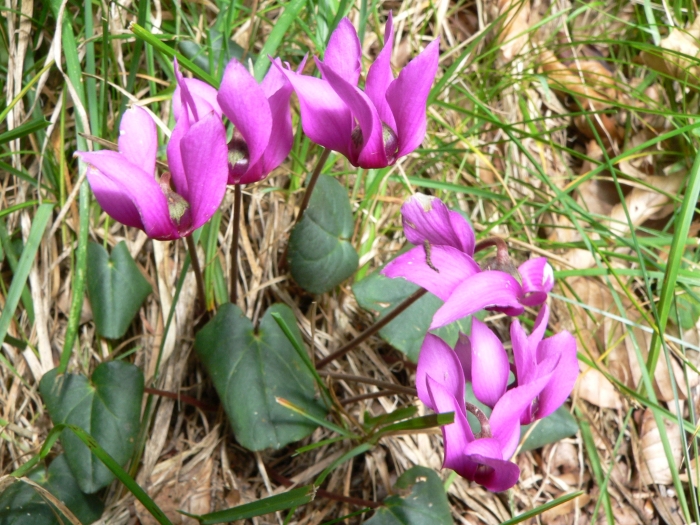Alpine Cyclamen
(Cyclamen purpurascens)
Alpine Cyclamen (Cyclamen purpurascens)
/
/

Mario Bassini
CC BY 4.0
Image By:
Mario Bassini
Recorded By:
Copyright:
CC BY 4.0
Copyright Notice:
Photo by: Mario Bassini | License Type: CC BY 4.0 | License URL: http://creativecommons.org/licenses/by/4.0/ | Rights Holder: Mario Bassini | Publisher: iNaturalist | Date Created: 2005-08-13T13:56:46-07:00 |
























Estimated Native Range
Summary
Cyclamen purpurascens, commonly known as the Alpine Cyclamen or purple cyclamen, is a tuberous perennial herb that is native to the cool, damp, and shaded environments of deciduous or mixed woodlands. It is found across central Europe, including northern Italy and parts of the Balkans, at elevations of 800-4,300 feet (244-1,311 meters). This species typically grows to a height of 4-6 inches (10-15 cm) with a similar spread. Cyclamen purpurascens has heart-shaped, dark green leaves that are often marbled with silver on the upper surface. It blooms from late summer to autumn, producing deep pink to magenta flowers that are sweetly scented and have reflexed petals, adding to their ornamental appeal. The flowers are followed by round seed pods that open in summer to release their contents.
Alpine Cyclamen is valued for its attractive foliage and flowers, which can add color to shady garden spots when other plants may not be in bloom. It is often used in woodland gardens, rock gardens, and as underplanting for deciduous trees. Cyclamen purpurascens prefers moist, well-drained soils rich in organic matter and thrives in part shade to full shade. It requires minimal maintenance once established and is relatively drought-tolerant. However, it can be susceptible to cyclamen mite and gray mold, especially in overly wet conditions. Gardeners should be cautious of its potential toxicity if ingested. There are no popular cultivars of this species, but its natural form is well-regarded for its beauty and resilience.CC BY-SA 4.0
Alpine Cyclamen is valued for its attractive foliage and flowers, which can add color to shady garden spots when other plants may not be in bloom. It is often used in woodland gardens, rock gardens, and as underplanting for deciduous trees. Cyclamen purpurascens prefers moist, well-drained soils rich in organic matter and thrives in part shade to full shade. It requires minimal maintenance once established and is relatively drought-tolerant. However, it can be susceptible to cyclamen mite and gray mold, especially in overly wet conditions. Gardeners should be cautious of its potential toxicity if ingested. There are no popular cultivars of this species, but its natural form is well-regarded for its beauty and resilience.CC BY-SA 4.0
Plant Description
- Plant Type: Herb, Bulb
- Height: 0.25-0.25 feet
- Width: 0.3-1 feet
- Growth Rate: Slow
- Flower Color: Pink, Purple, White
- Flowering Season: Summer, Fall
- Leaf Retention: Evergreen, Semi-deciduous
Growth Requirements
- Sun: Part Shade
- Water: Medium
- Drainage: Fast, Medium
Common Uses
Border Plant, Groundcover, Low Maintenance, Potted Plant, Rock Garden, Street Planting
Natural Habitat
Native to cool, damp, and shaded environments of deciduous or mixed woodlands at elevations of 800-4,300 feet in central Europe, northern Italy, and parts of the Balkans
Other Names
Common Names: European Cyclamen, Purple Cyclamen
Scientific Names: , Cyclamen purpurascens, Cyclamen aestivum, Cyclamen breviflorum, Cyclamen clusii, Cyclamen cordifolium, Cyclamen coum, Cyclamen cyclophyllum, Cyclamen deltoideum, Cyclamen europaeum
GBIF Accepted Name: